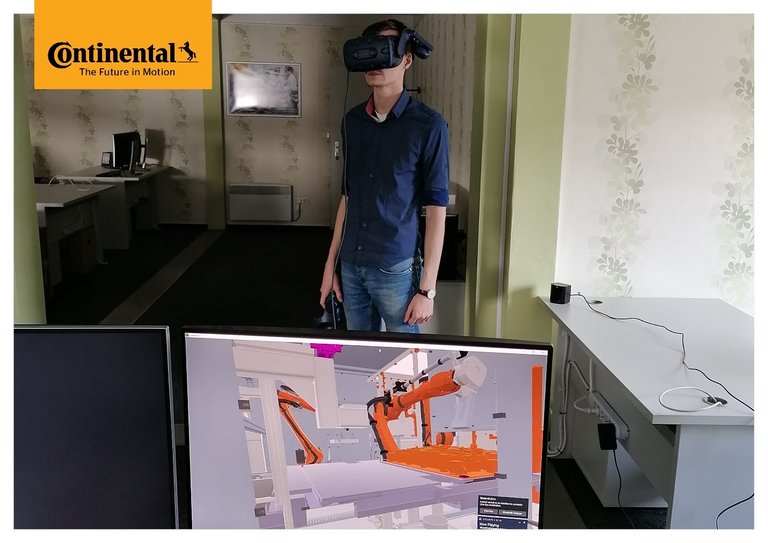Digitalization @ Plant TSR – Introducing our Virtual Reality Applications
With the introduction of our HMI O Virtual Reality (VR) Lab, Plant Timisoara takes a huge step towards Digitalization. In our vision of a digital factory all assembly lines can be designed, planned and visited in a VR environment long before their physical implementation. Simulation tools are used to create a very early but detailed visualization of the manufacturing concept and VR is supporting this by creating an exceptional and immersive user-experience.
Internal and external (suppliers & customers) feedback of our initial tests were so positive that we believe this system is irreplaceable and offers a lot of potential for the future. "We decided to take this project to the new level", says Andrei Sandu, the supervisor of the VR projects in TSR, working within the HMI O IE team “Advanced Automation & Digitalization”.
Hence, we decided to apply this to one of our lighthouse projects for the customer BMW, managed by Puianu Lucian - Constantin and Cenusa Daniel, which is by far the most complex and automated line in the HMI Plant Timisoara. Since this line was not installed yet at the beginning of our digital planning activities, our colleagues, Rotari Sergiu, Cercega Daniel - Alexandru and Herman Paul, created a first simulation of the line concept. By loading this simulation into the VR, we were able to get a more detailed and better understanding of the line. Based on this, we have started now several activities to perform virtual workshops to identify further potentials to improve the concept and the line performance.
Another application example is a line we developed for our colleagues at Plant Novi Sad. Using the standards from our HMI database, we managed to develop an assembly line in just few days starting from a scratch. So, our customer was able to see in an early stage of industrialization not only a 2D line concept but a fully simulated 3D layout, with movements from operators and the production stations.
Putting these two projects as examples for our “Digital Industrialization” activities, is already creating a lot of benefits but for sure offers a lot more potential in the future – once this has become daily-routine. Overall, based on feedbacks and own experience we see the biggest benefits in:
Early concept visualization towards internals and externals months before installation
Fast creation of different scenarios Improved & more robust planning results
Layout optimization and operator balancing
Faster planning and reduced time-to-market
Virtual Gemba & Virtual Improvement workshops months before installation
Possibility to perform remote operator trainings
Following this path, we are fully convinced that we will be able to move towards Digitalization and achieve our vision of the Digital Factory. Virtual Reality is only one aspect of this, but the results are very positive and also the feedback from colleagues, suppliers and customers are very promising.

